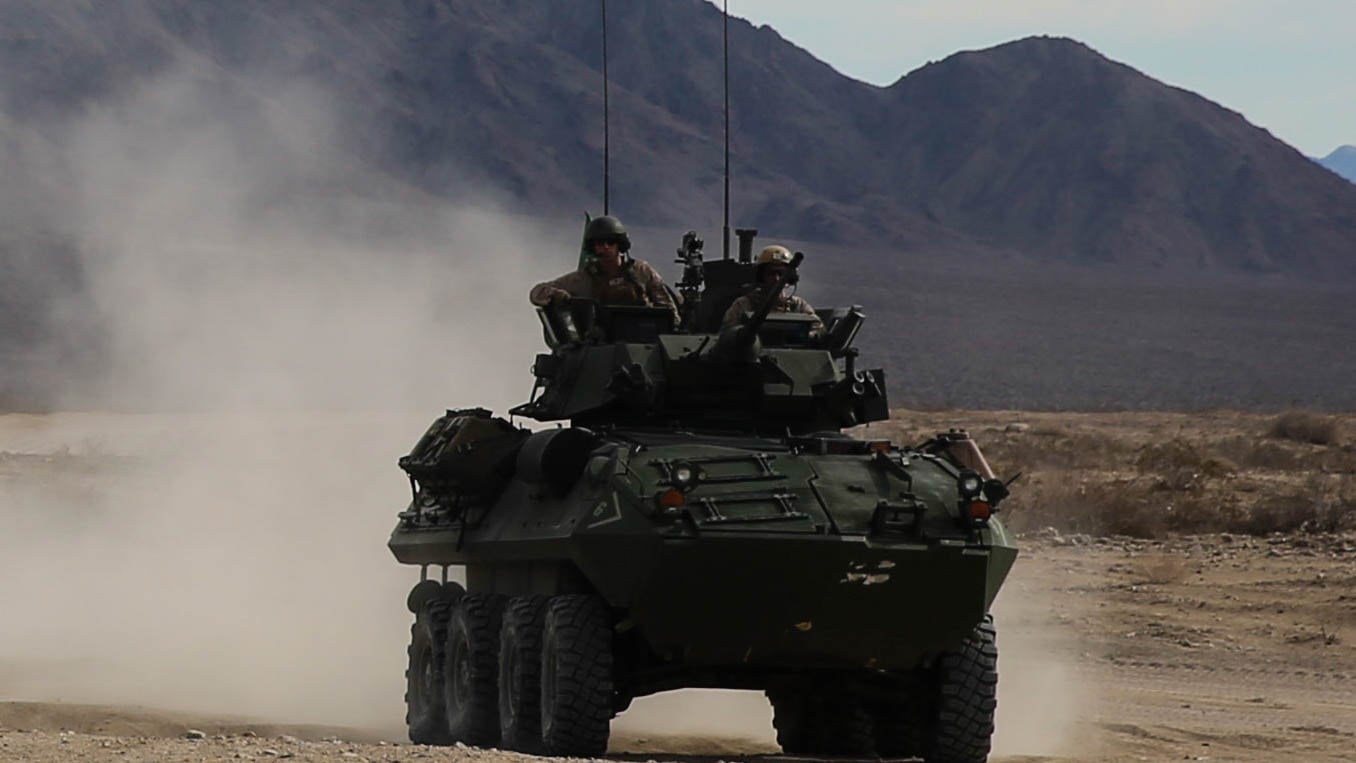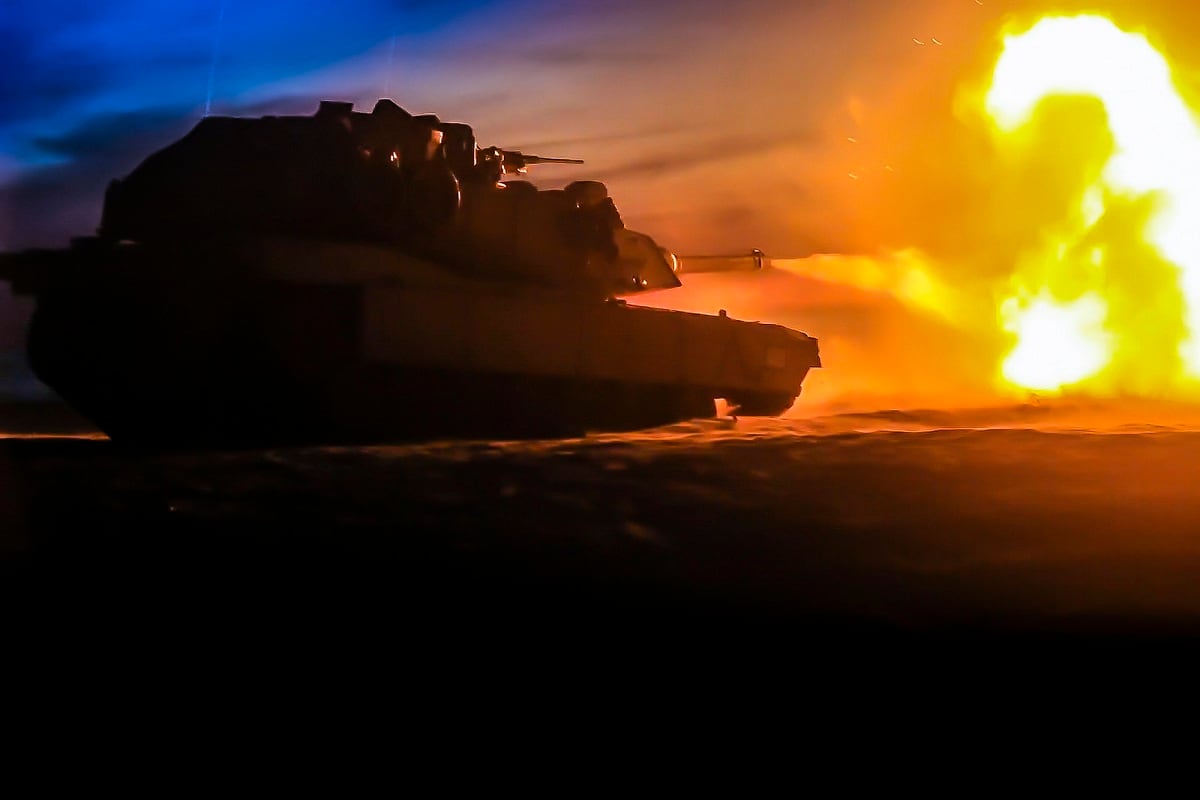The Marines are making strides in both their ability to destroy tanks with non-tank vehicles and ways to protect their own tanks from incoming threats.
An upgraded anti-tank weapon system, mounted on light armored vehicles, is an automated turret system that fires a tube-launched, optically-tracked, wire-guided, or TOW, missile. The new ATWS, which became operational in 2017, has a variety of features that improve operator safety and operational awareness.
“Marines using the new ATWS are immediately noticing the changes, including a new far target location capability, a commander/gunner video sight display, a relocated gunner’s station, and an electric elevation and azimuth drive system, which replaced the previous noisy hydraulic system,” said Steve Myers, LAV program manager with Marine Corps Systems Command.
The Corps expects to hit full operational capability by or before October.
RELATED

“Currently, there are 58 in service within the active fleet,” said Myers. “The original equipment manufacturer delivered 91 of the 106 contracted kits and is ahead of schedule. Now MCSC’s focus is directed at the Marine Corps Forces Reserve, ensuring they receive the same quality NET and support as their active counterparts.”
On the other end of the armored warfare spectrum, Marine tankers finally are being included in a larger effort to give tanks an updated, more sophisticated way to counter a variety of threats through the Army’s ongoing work to add active protective systems to its vehicles.
Earlier this month Leonardo DRS, a defense contracting company, announced it received nearly $80 million to provide more Trophy APS for the Army and Marine Corps.

Trophy is the system that will be used for both Army and Marine Abrams tanks. It helps defend against anti-tank missiles and other incoming threats that tanks were previously unprepared to combat.
The Army is also evaluating the Iron Curtain system for its Stryker vehicle and the Iron Fist system for the Bradley Fighting Vehicle. There is not a current protection system of similar design in the works for the Marine LAV.
Although the Trophy APS was successfully tested by industry on updated versions of the LAV in 2013.
The LAV has been in Marine formations for nearly four decades and is one of the oldest vehicle still in operation in the service.
Its eventual replacement, the program dubbed advanced reconnaissance vehicle, or ARV, has been an initiative with little public information provided for at least a decade.
But an industry day last year laid out some ‘wish list’ items that the Corps would like for the centerpiece of its lightly armored force it could feature a 30mm rather than 25mm cannon, it needs to be able to control a drone swarm and conduct electronic warfare while also acting as a battlefield sensor.
Todd South has written about crime, courts, government and the military for multiple publications since 2004 and was named a 2014 Pulitzer finalist for a co-written project on witness intimidation. Todd is a Marine veteran of the Iraq War.









